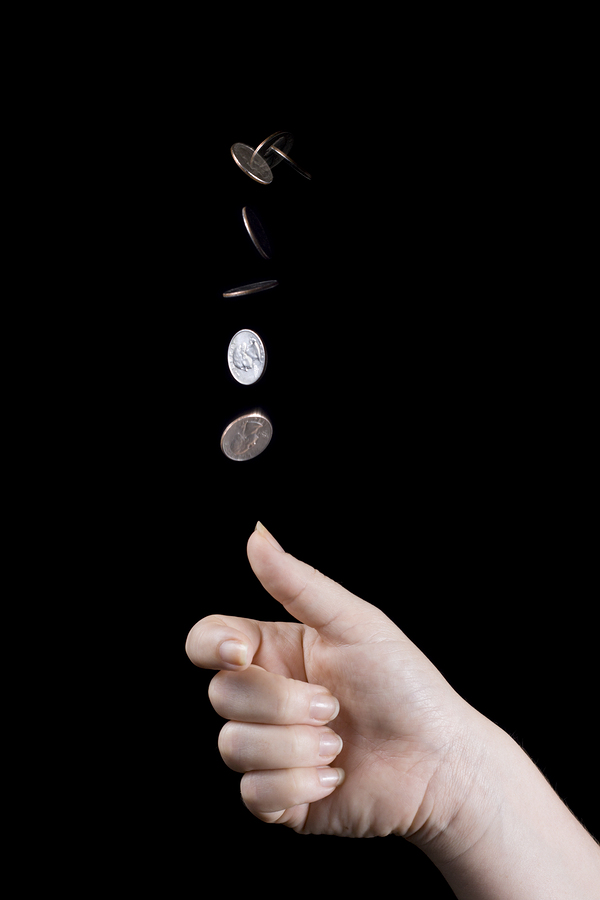Coin Flip Game
You are playing a game where you flip a fair coin a certain number of times with each coin flip independent of one another. If the coin has landed heads at least 60% of the time after all the designated number of flips, then you win a prize.
You can choose to flip the coin 10, 20, or 30 times.
How many times should you flip the coin in order to maximize your chance of winning?
This section requires Javascript.
You are seeing this because something didn't load right. We suggest you, (a) try
refreshing the page, (b) enabling javascript if it is disabled on your browser and,
finally, (c)
loading the
non-javascript version of this page
. We're sorry about the hassle.
](https://www.bellevuerarecoins.com/wp-content/uploads/2013/11/bigstock-Coin-Flip-5807921.jpg)
Intuitively, you want your flips to have a greater variability, since the 60% target proportion of heads is greater than the 50% expected proportion. As the number of flips increases, there is a higher probability for the proportion of heads to be 50%, meaning that there is less variability. Conversely, as the number of flips decreases, the proportion of heads becomes more spread out, meaning that there is more variability. Thus, we should flip the coin 1 0 times in order to maximize our chance of winning.
We can also show this mathematically. Let n be the number of times we flip the coin and p ^ be the proportion of flips that come up as heads. We want to find the probability that p ^ ≥ 0 . 6 i.e. the proportion of flips that come up as heads is at least 0.6.
The sampling distribution of p ^ follows a roughly normal distribution with mean p = 0 . 5 and standard deviation σ = n p ( 1 − p ) = n ( 0 . 5 ) ( 0 . 5 ) = n 0 . 5 . In other words, if we take all possible outcomes of n flips and find the proportion of heads in each outcome, we end up with a normal curve of all possible proportions that is centered at 0.5 and has a variability of n 0 . 5 .
Note that as n increases, σ decreases, which confirms our intuition that a greater number of flips means lower variability. If we calculate the z -score for each possible number of flips (assuming the sampling distributions are normal), we get
n = 1 0 n = 2 0 n = 3 0 ⟹ z = 1 0 0 . 5 0 . 6 − 0 . 5 ≈ 0 . 6 3 2 ⟹ z = 2 0 0 . 5 0 . 6 − 0 . 5 ≈ 0 . 8 9 4 ⟹ z = 3 0 0 . 5 0 . 6 − 0 . 5 ≈ 1 . 0 9 5 .
As n increases, the z -score of the target proportion gets larger, so the probability that the proportion of heads is greater than or equal to 0.6 increases as well. Therefore, to have the greatest chance at winning, we must flip the coin the least number of times possible, which is n = 1 0 .